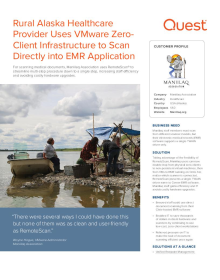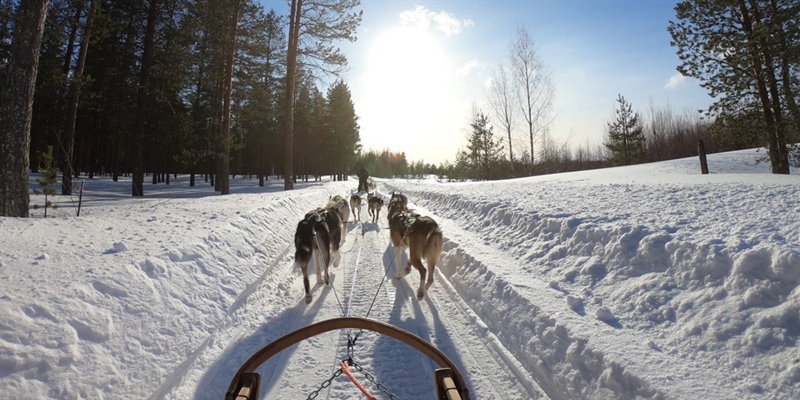Medical records scanning is difficult as it is. Want to see how much harder it can get?
4 layers of difficulty
First, let’s say that your users have to be able to access any scanner from anywhere. That means you need remote desktop scanning over your WAN.
Next, imagine that you’ve soured on physical clients with attached scanners because they’re too expensive. That means you migrate to non-persistent, virtual desktops in VMware with every user’s personalization layered on top. All scanners are attached to zero clients.
Then, suppose that you have four different models of scanner on your network. Even though the driver is identical across models, each machine presents a different TWAIN driver name to the scanning software, which permits only a single driver on the system. That means you have to figure out a way to fib to your EMR software.
Finally, assume that your WAN covers half of Alaska (750,000 square km), and that your technicians have to travel to villages by bush plane, snowmobile or even dog sled in the wintertime. That means you can’t just take an elevator or walk across campus to troubleshoot a problem with medical record scanning.
Piece of cake, right?
Medical record scanning across half of Alaska
Of course, Wayne Hogue, the VMware administrator at Maniilaq Association, didn’t confront all of those obstacles on day one. He worked on them over several years at Maniilaq, which manages social and health services in a dozen villages near Kotzebue, Alaska.
Over time, Hogue and his team had worked out remote desktop scanning. They had saved lots of money by gradually switching to virtual desktops on zero clients. Maniilaq users could log in anywhere and scan documents into the medical records of their patients. Their infrastructure served them well for 12 years.
But then they installed new EMR software, Cerner Millennium, that made it difficult to pull documents directly from scanners through the software and into the database. For one thing, Cerner permitted only a single TWAIN driver on the system. For another, its EMR scanning function relied on consistency among the name of the scanner, the name of the driver and the name of the workstation.
“All three of those have to be aligned in a database, or else the software won’t accept direct scanning,” says Hogue. “But with our desktop infrastructure, we never know the name of the workstation from one session to the next. Plus, we’ve got the double-hop from physical zero-clients to non-persistent virtual machines, then from VMs to Cerner running on Citrix.”
Evaluating and implementing RemoteScan®
You might think that most products for document management and scanning could accommodate those kinds of remote scanning configurations. You’d be wrong.
Hogue and his team had to come up with a multi-step, scan-and-import procedure that slowed all the users down but at least allowed them to remotely scan documents into the EMR software. Everyone put up with it for a while, but eventually patience wore thin.
“Figure out something better or go back to the physical client infrastructure with attached scanners,” said the bosses.
It wasn’t until Hogue and his team evaluated RemoteScan and talked to Quest® Technical Support that they found a solution. Maniilaq implemented RemoteScan and the fix for the double hop, allowing users to once again scan remotely from any workstation straight into the EMR database. That meant IT could stick with the same low-maintenance, low-cost infrastructure as before.
“I know I implemented RemoteScan in a brand-new way,” says Hogue. But the software was flexible enough to allow it. That was the big bonus.”
Find out about the 1:1 mapping and the double hop
The Maniilaq solution was such a neat hack that we couldn’t resist writing a customer success story about it. Have a look at “Rural Alaska Healthcare Provider Uses VMware Zero-Client Infrastructure to Scan Directly into EMR Application” for details on how they use RemoteScan. Hundreds of times a week, Maniilaq users enjoy zero-client infrastructure and flexible login from any workstation to scan directly into their EMR system.
Medical records scanning is difficult as it is. But read the customer story to see how much easier RemoteScan can make it.
Photo credit: Lars Ley




